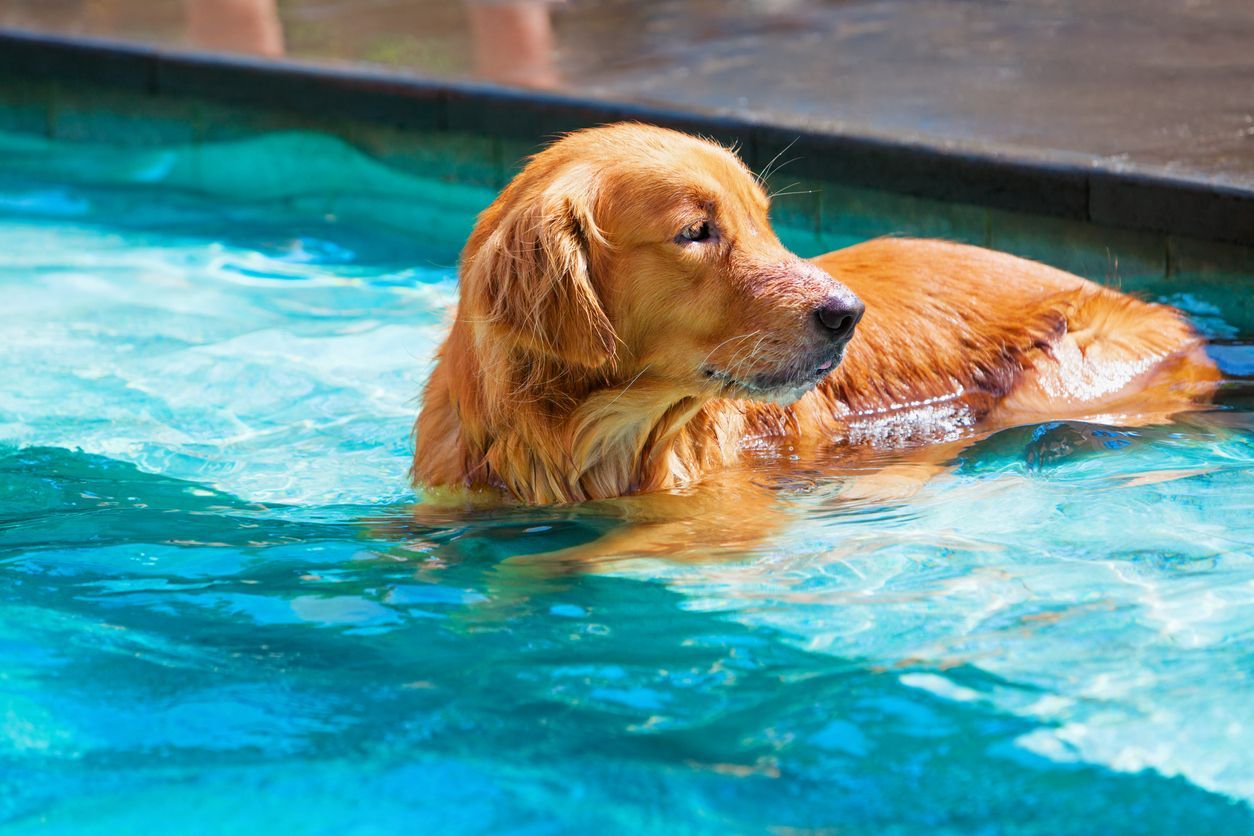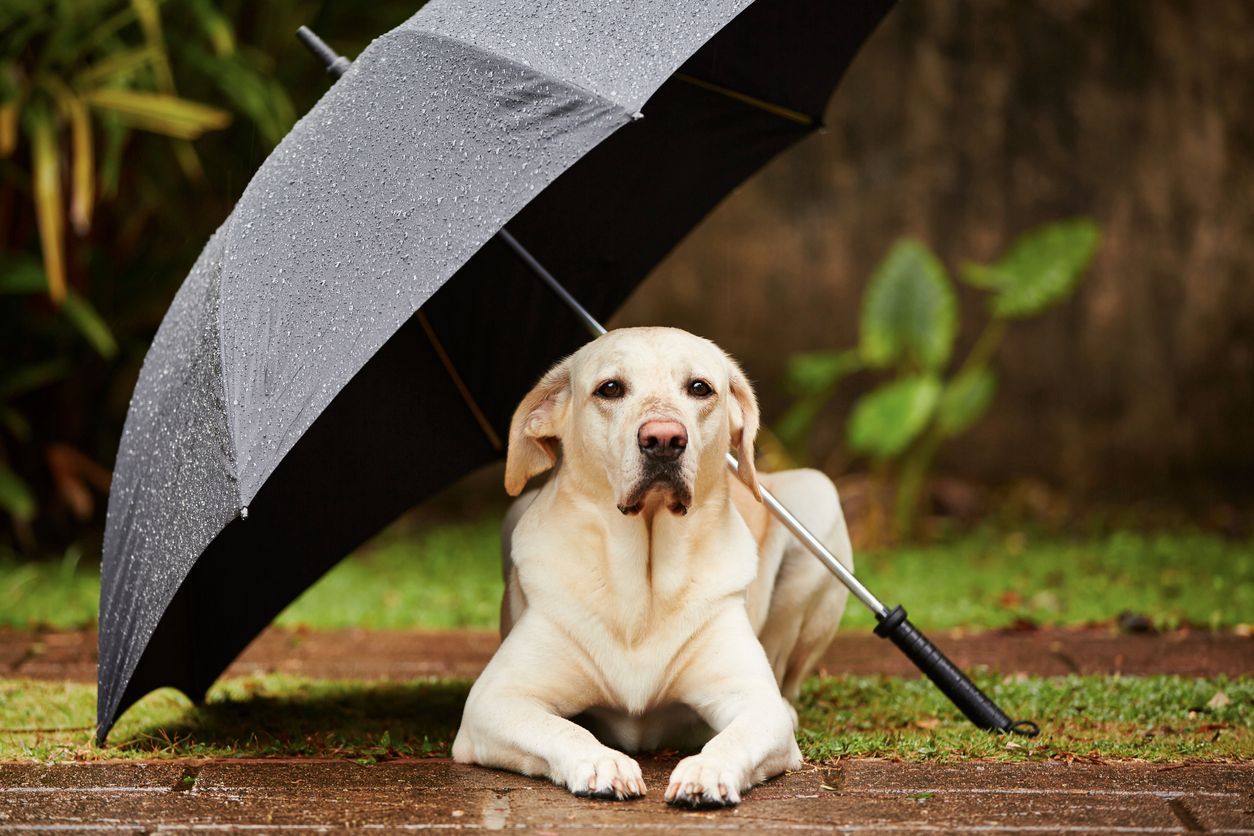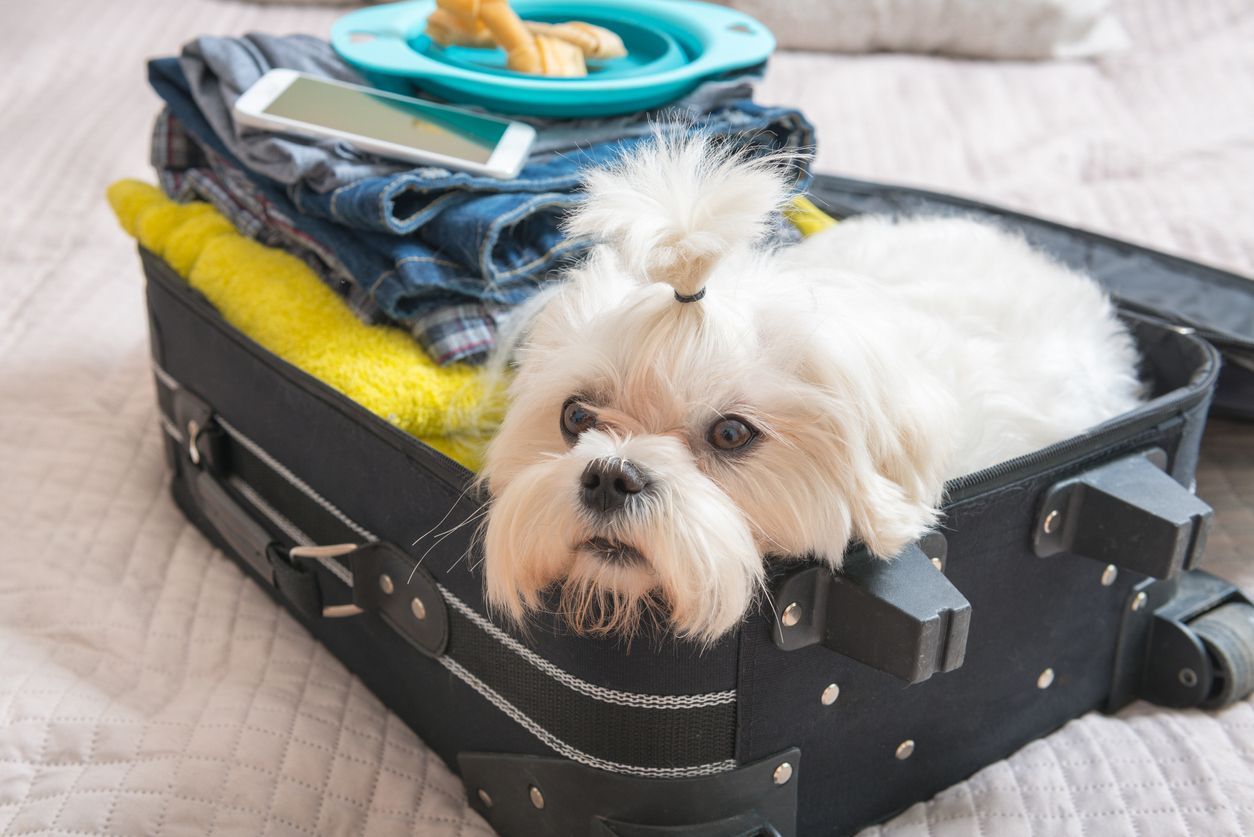Summer heat and your dog: Safety first!

Summer days bring increased sunlight and higher temperatures, putting dogs at risk throughout North America. It is important for pet parents to understand how dangerous heat-related illnesses are and how to recognize the signs of heat exhaustion so they can take action before symptoms progress into life-threatening heatstroke. Read on to learn
- How does hot weather harm my dog?
- How do I know if my dog is too hot?
- Can I keep my dog safe in the summer?
It is possible to keep your dog comfortable in the hot weather by using creative ways to exercise and entertain them safely. Heatstroke and heat-related injuries are real risks for all dogs as the weather heats up.
What are the risks of excessive heat for dogs?
The summer months bring rising temperatures that can be dangerous for dogs. While some dogs are more sensitive to heat than others, all dogs are at risk for heat-related illnesses and injuries.
Paw pad burns
Warm weather heats pavement and asphalt quickly. Asphalt can be up to 50 degrees F (10 C) hotter than the air temperature. Hot asphalt can cause severe burns on a dog’s paw pads. These burns can be extremely painful and cause skin sloughing and create risk of infection. “Pavement does not have to be all that hot to cause burns after only a few minutes of walking,” warns Dr. Jo Myers, a Vetster veterinarian. “It is too hot for your dog if you cannot put the back of your hand or stand barefoot on the pavement for longer than seven seconds.”
Hot cars
Car interiors rapidly heat up in warm weather. Even when parked in the shade and with cracked windows, the interior temperature in a car can increase 40 degrees F (4.5 C) within an hour. Most of this heat increase occurs in the first 15 to 20 minutes, so even a quick run into the store can leave your dog at risk for heatstroke.
Heatstroke
The most dangerous risk to dogs in hot weather is heatstroke. Heatstroke is a life-threatening emergency requiring immediate treatment at an animal hospital. Heatstroke occurs in dogs when their internal body temperature reaches 105-110 degrees F (40.6-43.3 C). At this temperature, tissues die, leading to organ damage and failure that can be quickly fatal. Heatstroke occurs most often in hot and humid environments, but all dogs are at risk, even at temperatures as low as 65 F (18 C). Leaving a dog in a car on a warm or sunny day is one of the most common causes of heatstroke in pets.
What are the signs of heatstroke in dogs?
Heat-related injuries occur in sequence but can progress rapidly. Knowing the signs of heat exhaustion can prevent it from progressing to heatstroke that requires emergency care. Early signs of heat exhaustion include:
- Heavy panting
- Seeking shade or water
- Lethargy
- Exercise intolerance
- “Splooting” stance or laying on the stomach with legs outstretched
If a dog shows these symptoms, it’s time to go indoors and cool down immediately. When heat exhaustion progresses towards heat stroke, worsening symptoms appear, such as:
- Elevated body temperature
- Severe vomiting and diarrhea, sometimes bloody
- Collapse or loss of consciousness
- Pale, muddy, dark red, or bloody gums
- Seizures or muscle tremors
If your dog experiences any of these symptoms, contact an emergency veterinary hospital immediately. Heat stroke is usually rapidly fatal and treatment is often unsuccessful. Even if your dog survives, they may have irreversible organ failure that can leave them medically impaired for the remainder of their life.
What dogs are most at risk for heatstroke?
Some dogs are more sensitive to the heat and more likely to experience heat-related illnesses. Dogs who are most at risk include:
- Dogs who enthusiastically exercise or play outdoors
- Obese or overweight dogs
- Brachycephalic breeds
- Dogs with conditions such as heart disease, respiratory problems, and epilepsy
- Those with a prior history of heatstroke
- Senior dogs
All dogs must always be monitored in the heat regardless of size, age, or breed.
How can I keep my dog safe in hot weather?
There are steps dog owners can take to keep their furry friends safe in the summer heat. Avoid walking in direct sunlight and during the hottest part of the day, usually between 11 am and 5 pm. Avoid strenuous outdoor activities and provide plenty of cool water and access to shade. Keep their water bowl in the shade to encourage them to play where it is cooler. Find fun ways to play indoors to get exercise and mental stimulation.
Avoid pavement and asphalt when walking outside. When this is impossible, walk in shaded areas or utilize hot weather shoes if tolerated. Always test the pavement temperature before a walk, even if the air temperature feels pleasant, as it can retain heat. Finally, never leave a dog in a car. Always practice water safety by monitoring a dog around swimming pools, lakes, and beaches.
If you have questions about summer safety and whether your dog is at risk for heatstroke, an online vet with Vetster will be more than happy to address your questions and concerns.
FAQ - Summer heat and your dog: Safety first
What temperature is too hot for dogs to be outside?
Individual dogs have varying overall heat tolerances based on age, breed, energy level, and pre-existing health status. It’s also easier for a dog to tolerate the heat if they’ve gradually become acclimated to it. Heatstroke can occur in ambient temperatures as low as 65 F (18 C). Remember: if it feels hot to you, it feels even hotter for your dog. Keep a close eye on your dog outdoors in the heat and go indoors as soon as they appear tired.
How do I keep my dog safe in extreme heat?
The best way to keep a dog safe when it is extremely hot outdoors is to stay inside. If you must be outdoors, stay in the shade as much as possible and provide plenty of cool, fresh water.
How do I know if my dog is too hot?
When a dog begins to overheat, it will pant excessively, seek shade and water, and appear lethargic. They may also have an increased heart rate. As soon as these signs occur, cool them off by going indoors and providing access to water.
How do you prevent heatstroke in dogs?
Keep dogs indoors during the hottest part of the day by playing inside or walking in dog-friendly areas with an air conditioner. If you cannot avoid being outdoors, stay in the shade, offer plenty of water, and avoid strenuous exercise.




